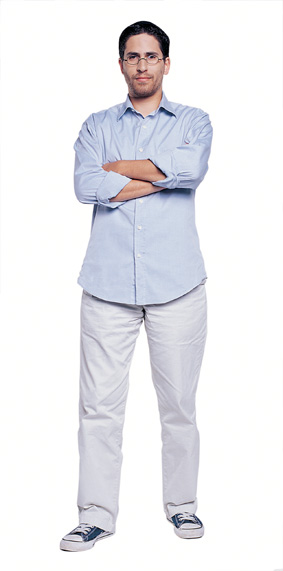עיתונאיות ועיתונאים, הירשמו כאן להודעות לעיתונות שלנו
הירשמו לניוזלטר החודשי שלנו:

Many diseases begin with a handful of viruses – tiny formations of genetic material and protein – slipping past cells' outer walls and tricking the cells' own copying equipment into making new viruses. How does a virus penetrate a living cell wall? And in what ways does this intruder disrupt life inside the cell? These questions are central to the research of Nathan Zauberman, a student in Prof. Abraham Minsky's group in the Weizmann Institute's Organic Chemistry Department.
Zauberman focuses on the Mimi virus – so far the largest virus known. It mainly attacks amoebae, killing them within 12 hours, but can also cause respiratory illness in immunodeficient people. To understand how these viruses work, Zauberman freezes them at different stages in the cycle of infection and then observes these stages, like a series of still vignettes, under an electron microscope. He later builds three-dimensional models to aid him in assessing what takes place in the cell during each step of the viral invasion.
"I first became interested in science when I was introduced, as a child, to the Book of Genesis and the story of the creation of the world."

He discovered, among other things, that upon breaching the cell wall, the virus opens like a flower, releasing genetic material that makes its way to the cell nucleus. Zauberman and his fellow researchers were also able to observe another key stage – one in which viral genes that have been forcibly produced in the besieged cell are cloaked in the protein envelopes of newly synthesized viruses before exiting. Each of these stages presents a possible focus for developing new anti-viral drugs.
"I chose to study at the Weizmann Graduate School because it gave me the opportunity to work in a uniquely challenging and stimulating environment, and in one of the most advanced electron microscopy units in the world."
Nathan Zauberman’s research in the lab of Prof. Abraham Minsky is supported by the Helen and Milton A. Kimmelman Center for Biomolecular Structure and Assembly. Prof. Minsky is the incumbent of the Professor T. Reichstein Professorial Chair.